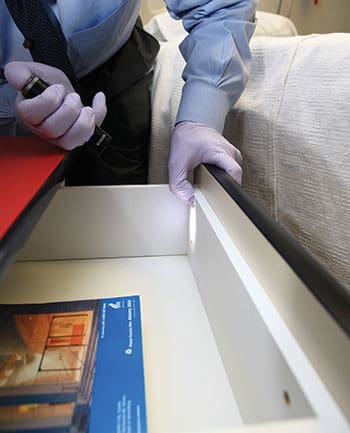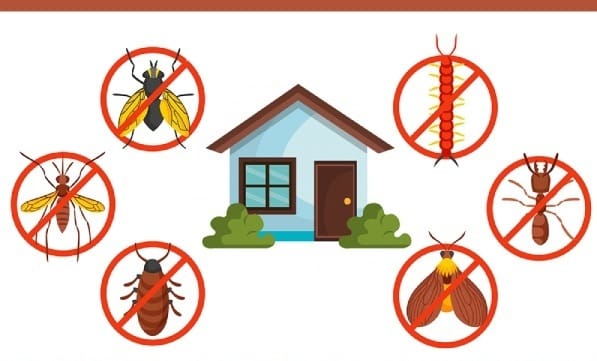As you or your loved ones age, it’s important to consider the unique challenges that come with pest control. In our latest blog post, “Pest Control for the Elderly: Special Considerations,” we explore the specific factors that need to be taken into account when dealing with pests in the homes of older adults. From safety concerns to health implications, we delve into the importance of providing a pest-free environment for seniors and share valuable tips and insights on how to effectively address this issue. Join us as we navigate this crucial aspect of pest control and ensure the wellbeing of our elderly population.

Identifying Common Pest Issues
Pests can be a common and bothersome problem in homes, and it’s important to be able to recognize the signs of an infestation. By identifying these signs early on, you can take the necessary steps to address the issue before it becomes a major problem. Some common signs of a pest infestation include droppings or urine stains, gnaw marks on furniture or walls, and the presence of nests or webs. If you notice any of these signs, it’s important to take action right away to prevent the pests from multiplying and causing further damage.
When it comes to the homes of the elderly, there are certain pests that tend to be more common. This can be due to factors such as decreased mobility and a weakened immune system, making them more susceptible to infestations. Some of the common pests found in homes of the elderly include rodents, such as mice and rats, as well as insects like bed bugs, cockroaches, and ants. These pests can pose a significant threat to the health and well-being of the elderly, so it’s important to address any infestations promptly.
Health Risks of Pest Infestation
pest infestations can have a serious impact on the health of the elderly. These pests can carry diseases and bacteria, which can be easily transmitted to humans. For example, rodents can transmit diseases such as hantavirus and salmonella through their droppings and urine. Bed bugs can cause skin irritations and allergic reactions. Cockroaches can trigger asthma attacks and allergic reactions due to their droppings and shed skin. Ants can contaminate food and surfaces, leading to foodborne illnesses.
In addition to the direct health risks posed by pests, the presence of these pests and the stress caused by infestations can also have a negative impact on the mental and emotional well-being of the elderly. Living in a home with pests can be distressing and can lead to feelings of anxiety and helplessness. It’s important to address these issues promptly to ensure the health and comfort of the elderly.

Prevention Methods
Prevention is key when it comes to pest control. By taking proactive measures to prevent pests from entering your home, you can reduce the risk of an infestation. One important step is to seal entry points around your home. This includes filling cracks and gaps in walls, windows, and doors, as well as sealing openings around pipes and utility lines. By closing off these entry points, you can prevent pests from finding their way inside.
Maintaining cleanliness and hygiene in your home is another crucial aspect of pest prevention. Pests are attracted to food and water sources, so it’s important to clean up spills and crumbs promptly, store food in airtight containers, and keep garbage in sealed bins. Regularly vacuuming and dusting your home can also help prevent pests, as it eliminates potential food sources.
Proper storage and waste disposal are also important factors in pest prevention. Keep food stored in tightly sealed containers to prevent pests from accessing it. Dispose of garbage regularly in sealed bins located away from your home. This will help reduce the potential food sources that attract pests.
Non-Chemical Pest Control Options
If you prefer to avoid the use of chemicals in your pest control efforts, there are several non-chemical options available. Mechanical traps and barriers can be used to capture and eliminate pests. For example, mousetraps can be used to catch and remove rodents, while sticky traps can be effective in capturing crawling insects. Installing screens on windows and doors can also act as a barrier against pests, preventing them from entering your home.
Biological controls can also be an effective non-chemical pest control option. This involves introducing natural predators or parasites that feed on the pests. For example, releasing predatory insects like ladybugs can help control aphids or releasing nematodes to target soil-dwelling pests. This method can be environmentally friendly and can help maintain a balance in your garden or outdoor space.
Electronic pest repellents are another non-chemical option to consider. These devices emit ultrasonic or electromagnetic waves that are designed to repel pests. While the effectiveness of these devices can vary, they can be a useful tool in conjunction with other pest control methods.

Chemical Pest Control Options
When non-chemical methods are not sufficient or practical, chemical pest control options can be considered. It is important to choose safe and effective pesticides that are specifically labeled for the target pest and follow the instructions carefully. Look for products that are approved by regulatory bodies and have a low toxicity level. Some pesticides are formulated to target specific pests, so it’s important to choose the right product for your particular situation.
In some cases, it may be necessary to hire professional pest control services to address a pest infestation effectively. Pest control professionals have the knowledge and experience to identify and address the specific pest issues in your home. They can use a combination of chemical and non-chemical methods to eliminate the pests and prevent future infestations.
Safety Considerations
When using chemical pesticides, it is important to ensure minimal exposure to both humans and pets. Read and follow the instructions provided on the product label carefully. Take precautions such as wearing protective clothing and gloves, and avoid applying pesticides in areas where elderly individuals or pets frequent. Keep children and pets away from treated areas until the product has dried or as directed by the label. Proper ventilation is also important when using chemical pesticides indoors.
Protective clothing and equipment can help minimize the risk of pesticide exposure. Wear long sleeves, long pants, closed-toe shoes, and gloves when applying pesticides. Use goggles or safety glasses to protect your eyes, and consider wearing a mask or respirator if there is a risk of inhaling the pesticide. Properly clean and store these items after use to prevent any potential contamination.

Managing Pest Control in Elderly Care Facilities
Managing pest control in elderly care facilities can present unique challenges. The health and well-being of the residents must be the top priority, so it is important to develop a comprehensive pest control plan that takes into account their specific needs and vulnerabilities. Regular inspections should be conducted to identify any signs of pest activity, and immediate action should be taken to address any infestations.
Collaboration between the facility staff and pest control professionals is crucial in effective pest management. The staff should be trained on how to identify common signs of pests, implement preventive measures, and address any concerns promptly. Pest control professionals can provide guidance on the most effective pest control strategies and help develop an integrated pest management plan tailored to the specific needs of the facility.
Educating the Elderly on Pest Control
Education plays a vital role in pest control, and it is important to educate the elderly on how to prevent and address pest issues. Informative brochures and pamphlets can be distributed to provide information on common pests, their signs of infestation, and preventive measures. These materials can be made easily accessible in community centers or healthcare facilities to reach a wider audience.
Engaging in community outreach programs can also be an effective way to educate the elderly on pest control. Workshops or seminars can be organized to provide hands-on demonstrations and practical tips for pest prevention. This can empower the elderly to take proactive measures in their own homes and contribute to a pest-free environment in their community.

Case Studies: Success Stories
Real-life examples of successful pest control in elderly homes can serve as motivation and inspiration for others facing similar issues. Case studies can highlight the challenges faced, the strategies employed, and the positive outcomes achieved. Sharing these success stories can help educate and empower others to take action and address pest infestations effectively.
Product Reviews: Pest Control for the Elderly
When it comes to pest control products for the elderly, there are several options available in the market. These products can vary in terms of effectiveness, ease of use, and safety. It is important to choose products that have been specifically developed for pest control in elderly homes and have received positive reviews. By providing comprehensive product reviews, the elderly and their caregivers can make informed decisions and choose the most suitable pest control solutions for their needs.
In conclusion, pest control is a crucial aspect of maintaining the health and well-being of the elderly. By being able to identify common pest issues, understanding the health risks associated with infestations, and implementing preventive measures, we can create a safe and comfortable living environment for the elderly. Whether opting for non-chemical or chemical pest control options, it is important to prioritize safety and consider the specific needs of the elderly. By educating the elderly and sharing success stories, we can empower them to address pest issues effectively in their own homes and communities.

I am Randy, the author behind PestControld.com. Drawing from decades of experience, I aim to provide valuable insights, expert advice, and practical recommendations to help you make informed decisions when assessing viable pest control solutions.